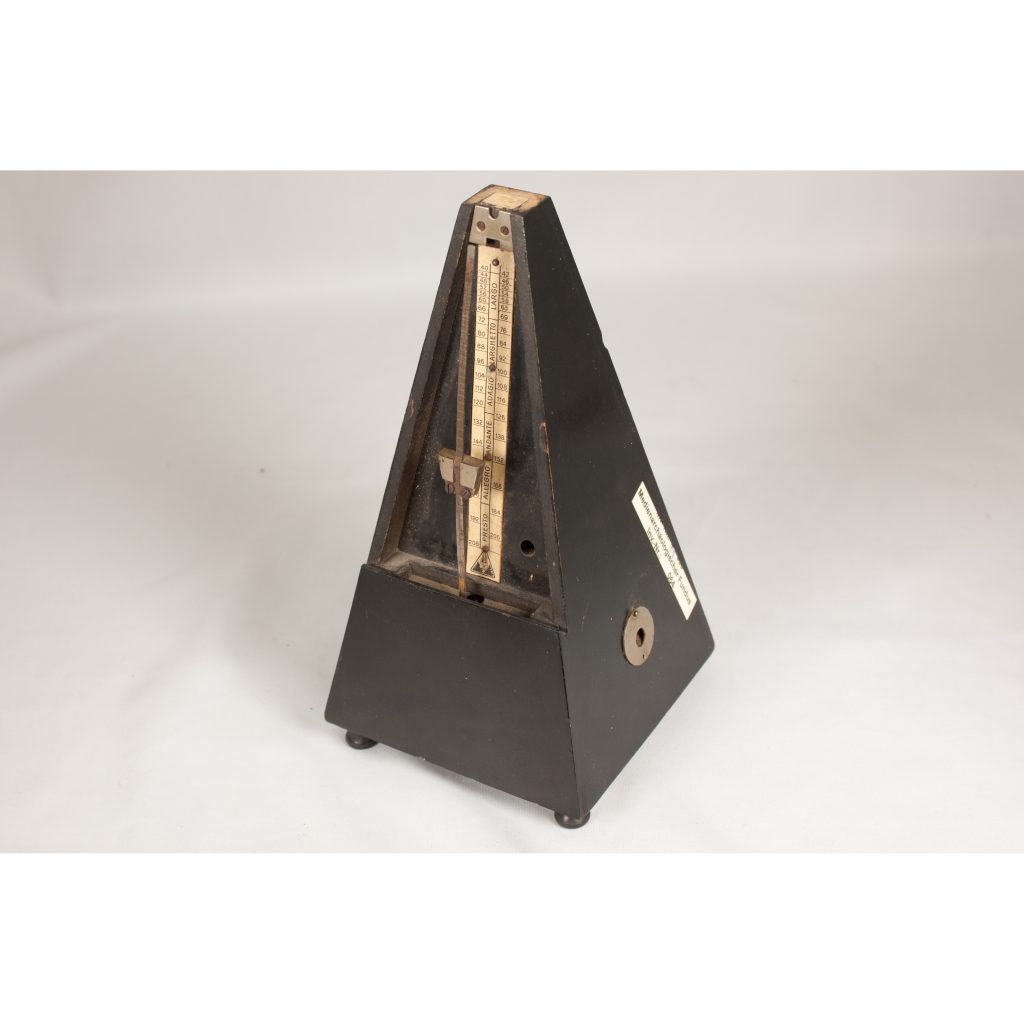Artefacts
Metronome
Metronome
(Accession Number: 064)
The authoritative musicological encyclopedia Grove Music Online defines the metronome as an “apparatus for establishing musical tempo” and “the clockwork-driven double-pendulum device perhaps invented about 1812 by Diederich Nikolaus Winkel but refined and patented by Johann Nepomuk Maelzel in 1815.” The definition names several distinct but interconnected modes of use in musical practice, including the establishment of (approximate) appropriate tempo and the creation of (strict and inflexible) consistency of tempo within a piece or an exercise. A mechanical metronome like the one shown here produces audible cues through its oscillating pendulum, the period of which can be adjusted by moving the weight up and down the marked scale. There is much debate over both the musical benefits of using metronomes and the accuracy of historical metronome marks in nineteenth-century music. However, as an early mechanical apparatus used to quantify acoustic phenomena, the metronome certainly paved the way for the development of more sophisticated sound-measuring devices.
© 2015 – 2026 Humboldt-Universität zu Berlin






